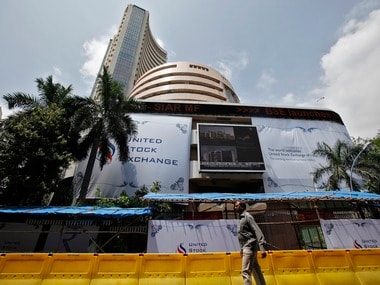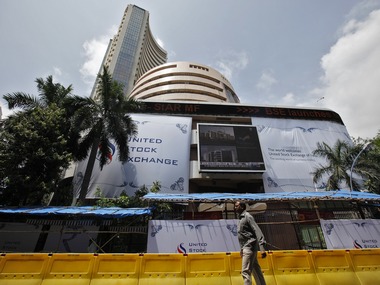As I write this, I am listening to one of my favourite songs, “ Free Fallin’”, sung by Tom Petty and the Heartbreakers. And it is indeed heart-breaking to see the BSE Sensex go on a free fall today. It fell by 1,624.51 points during the course of the day to close at 25,741.56 points. In absolute terms it is the biggest single day fall ever. But that is not the right way of looking at it (though that is how much of the media will report it). [caption id=“attachment_2404992” align=“alignleft” width=“380”]  Bombay Stock Exchange. Reuters[/caption] In percentage terms, the Sensex fell by 5.94 percent during the course of the day. This is the 29th biggest fall ever. Given this, the Sensex fall today is a big fall, but it is not as big as it will be made out to be. Much analysis has happened around the fall and various reasons have been offered on why the stock market is on a free fall. A major reason that has been offered is that the Chinese stock market has fallen by around 8.5 percent today. The Shanghai Composite Index is quoting at around 3,210 points, down 298 points from Friday’s close. And given that the Chinese market has fallen, the contagion has spread to other stock markets as global investors try and limit their losses by selling out. But this is only partly true. The thing is that the Chinese stock market has been going down for a while now. Here is a column I wrote on 9 July 2015 , trying to explain why the Chinese stock market has fallen. It has been more than six weeks since then. Hence, the question to ask is why has it taken so long for the Indian stock market to react to the Chinese fall? Why has the contagion taken so long to spread? The answer is not as simple as it is being made out to be. Until 11 August 2015, one dollar was worth 6.2 yuan. The People’s Bank of China, the Chinese central bank, over the years, has maintained a stable value of the dollar against the yuan. This has essentially been done to help Chinese exporters. By ensuring the yuan had a fixed value against the dollar, the Chinese central bank took this variable out of the Chinese exporters’ equation totally. This helped Chinese exports and exporters flourish and has been a very important part of the Chinese economic miracle. Between 11 and 14 August 2015, the Chinese central bank devalued the value of the yuan against the dollar and pushed down its value to around 6.39 yuan to a dollar. This was the biggest devaluation of the yuan against the dollar in nearly two decades. A major reason for the same was the fact that Chinese exports for the month of July 2015 had fallen by 8.3 percent in comparison to June 2014. Even in June 2015, the Chinese exports went up by only 2.8 percent, in comparison to a year earlier. But all that happened nearly 10 days back, why is all hell breaking lose now? On 21 August 2015, data pertaining to the Chinese factory sector was released. It showed that the Chinese factory sector had shrunk to its lowest level since January to March 2009. This data point led to stock markets around the Western world falling. The Dow Jones Industrial Average, one of the premier stock market indices in the United States, fell by around 531 points or 3.12 percent to close at around 16,460 points. The FTSE 100 Index of the London Stock Exchange fell by 2.8 percent. Why were these markets reacting to negative Chinese factory data? The simple answer lies in the fact that a shrinking factory sector is a reflection of weak Chinese exports. And what this means is that the People’s Bank of China is likely to devalue the yuan more in the days to come. If that were to be the case, it would give Chinese exporters some leeway to cut their prices in order to get their exports growing again. And this will lead to imports prices of Chinese goods coming into the United States, Europe and other parts of the world, falling. As Albert Edwards of Societe Generale wrote in a recent research note: “This move will transform perceptions about the resilience of the US economy… Up until now Japanese yen devaluation has been the main driver of falling US import prices.” Now the devaluation of the Chinese yuan (i.e. if it continues) will add to falling import prices in the United States. What this means is that the local goods being produced in the US and Europe will also have to cut prices in order to compete with cheaper Chinese imports. And that can’t be good for the economy. This is precisely the reason why stock markets through much of the Western world fell on Friday. These stock markets close a few hours after the Indian stock market had closed. The BSE Sensex had gone up marginally on Friday. So, when it opened today, the BSE Sensex had to adjust to a new level and the possibility of the Chinese authorities devaluing the yuan further. If the yuan is devalued further, it would mean cheaper Chinese goods hitting all parts of the world (not that they are not already). In the process China would end up exporting deflation (lower prices) to large parts of the world. Lower prices would mean that the economies will not grow at the same pace as they were in the past. And that is a possibility that the stock market needs to adjust to. Further, as markets fall, selling leads to more selling. To conclude, since I started with a Tom Petty song, I will end with one as well: “ Coming down is the hardest thing.” Hope this helps, dear reader. Happy listening! (Vivek Kaul is the author of the Easy Money trilogy. He tweets @kaul_vivek)
A major reason that has been offered is that the Chinese stock market has fallen by around 8.5 percent today.
Advertisement
End of Article


)

)
)
)
)
)
)
)
)



